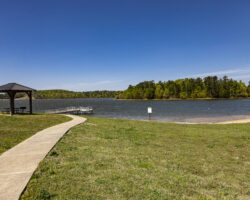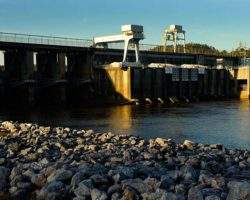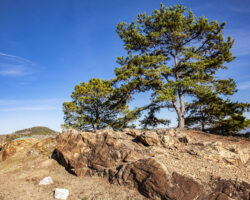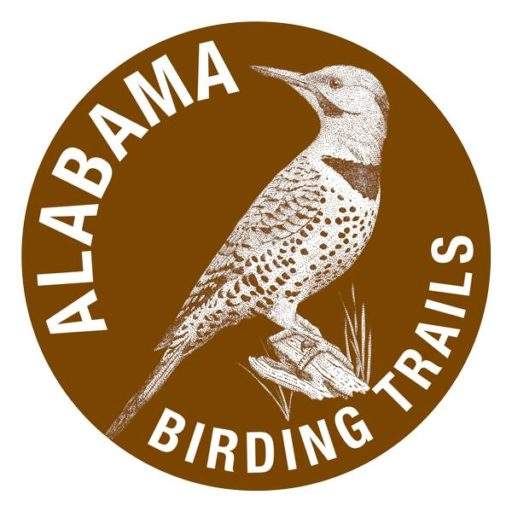Appalachian Highlands | St. Clair | Best Seasons: Fall | Spring | Winter
Horse Pens 40, situated atop the southwestern end of Chandler Mountain, preserves a fascinating natural area featuring a huge boulder field of pre-Cambrian sandstone. The park is open 7 days a week, and hosts a number of blue-grass concerts and Native American festivals throughout the year. It also offers some first-rate mountaintop birding, especially during spring and fall migration.
The main feature of Horse Pens 40 is the boulder field, which reputedly contains some of the oldest rocks yet known. The area is open to the public, and self-guided trails wind among and through the giant boulders. Carolina Wrens are the most common bird among the rocks, and in winter both House and Winter wrens are usually present. Eastern Towhees and Chipping Sparrows are permanent here, and Dark-eyed Juncos, Song and White-throated Sparrows are present in good numbers from October to April. There is an elevated boardwalk that enables visitors to stroll through the mid-story of the scattered hardwoods. Expect a general mix of mid-story and canopy songbirds in the hardwoods here. This is an excellent place to look for Blue-headed Vireos. The state bird – the Northern Flicker – is a regular all year.
The park features a good number of Red-headed, Hairy, and Pileated Woodpeckers. You’ll find Brown-headed Nuthatches and Pine Warblers in the piney central portion of the park, away from the boulder field. There are thicker woods with more dense understory on the back side of the boulder field. This is the place to search for Kentucky and Hooded Warblers, Wood Thrushes, Gray Catbirds, Indigo Buntings, White-eyed Vireos, and even a few Yellow-breasted Chats (spring through fall).
The road to Horse Pens 40 (St. Clair County 35) passes through farm and field habitat that deserves attention. Eastern Meadowlarks are present all year, as are the increasingly scarce Northern Bobwhites. You can see Wild Turkeys at the edges of the fields in early morning and late afternoon. Watch for soaring hawks and vultures. In winter, Northern Harriers are sometimes seen coursing the fields. Eastern Kingbirds, Eastern Bluebirds, Indigo Buntings, Blue Grosbeaks, Orchard Orioles, American Goldfinches, Field Sparrows, Barn and Rough-winged Swallows, Purple Martins, and more are present here in the warmer months.
After turning off County 42 to Horse Pens 40, you’ll see a barn and pasture to the left, and an open field for event parking to the right. The barn and pasture area may harbor Eastern Bluebirds and Eastern Phoebes all year, Barn and Rough-winged Swallows in the warm months, and Brewer’s Blackbirds and White-crowned Sparrows in winter. The open field to the left holds potential as a possible American Woodcock lek from January to June. You can see Whip-poor-wills and Chuck-will’s-widows at the edge of the woods. This open area is the best vantage point for miles around to scan for hawks.
Just beyond the pasture on the left is a large pond/small lake. Typical breeding birds should be Orchard Orioles, Great Crested Flycatchers, Blue-gray Gnatcatchers, Eastern Wood Pewees, Yellow-throated and Red-eyed Vireos, and Indigo Buntings.
GPS 33.9234 -86.305683
Horse Pens 40
3525 County Rd 42
Steele, AL 35987
256-538-7439
Amenities: Parking, restrooms, lodging, camping, picnic, food, trails
Hours: 9 A.M.-sunset
Fee: Adults $8-$10, children under 10 free. Check website for current pricing.
From I-59 in St. Clair County, take exit 166. Exit onto US 231 N. There is limited food and gasoline at the exit, more in Ashville, 5 minutes east on US 231. Follow US 231 N 2.2 miles, turning right onto St. Clair County 35. Follow County 35 for 1.8 miles. Turn right on St. Clair County 42, and follow the narrow, twisting road 1.3 miles to the entrance to Horse Pens 40 on the right. An entrance fee is charged.
Amenities Available: Camping (tent/RV), Food Available, Gravel or Dirt Trails, Lodging (hotel/cabins), Picnic Tables, Restrooms
Nearby Sites

Logan Martin Dam
Logan Martin Dam is notable for being one of the premier locations in the state for viewing wading birds, particularly Black-crowned Night Herons. Waders in large numbers are attracted to the rough water just below the dam, where an abundance of fish …

Neely Henry Dam
Neely Henry Dam on the Coosa River offers great opportunities to observe a variety of water-loving birds. Winter brings gulls (mostly Ring-billed, some Bonaparte’s and Herring, rarely Glaucous, Lesser Black-backed, etc.) and a few Forster’s Terns, pr …

Ten Islands Historical Park
Ten Islands Historical Park, on the shores of Neely Henry Lake just above the dam, offers first-rate birding. Though the park itself is small, there is a vast amount of excellent habitat here – the entrance road provides shoreline access to deep wate …
